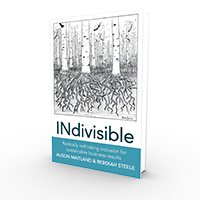
Executive Talent Magazine

Q. Diversity and inclusion have been prioritized for years, yet we don’t seem to be making much progress. Why?
 ALISON MAITLAND
ALISON MAITLAND
I think we can say that there has been some advancement in some areas, but also worryingly little in others, and many organizations are really frustrated about the lack of progress. We see several reasons why this has happened. The first one is that diversity and inclusion are very often disconnected from business goals, priorities and the outcomes that the organization is trying to achieve. So that means that they don’t receive the kind of focus, resources and accountability that other business drivers do, like marketing or finance or strategic workforce planning or safety.
Inclusion is absolutely critical, and in fact we call it ‘harnessing the collective superpower of diversity.’ Without inclusion, diversity is really unfulfilled potential. But unfortunately, inclusion remains poorly understood and poorly measured. Diversity and inclusion are often conflated. For example, companies use statistics about the proportion of different groups in the workforce or in leadership roles, and they say that’s a measure of how inclusive they are, when actually that’s a measure of diversity and they’re not focusing on or measuring inclusion at all.
 REBEKAH STEELE
REBEKAH STEELE
Yes, and in addition we so often see organizations replicating what are called ‘best practices’ from other companies, even when there’s clear evidence that these are incomplete or ineffective practices. One example is when implicit bias awareness training is put into a DEI (Diversity, Equity and Inclusion) strategy, even though a 2019 meta-analysis of all the evidence showed this actually has limited impact on mitigating bias in behavior.
In addition, diversity and inclusion efforts are often treated as piecemeal approaches, isolated programs, or siloed initiatives, and a pretty narrow lens is put on this work. One example is that if an organization is measuring inclusion at all, they are typically measuring only a small part that doesn’t give anything like a complete picture of inclusion. Many seek to measure how inclusive they are by asking individual employees just a handful of questions that are inserted into an engagement survey. For example, do employees feel they’re treated with respect, or do they feel a sense of belonging? And this just misses a whole lot of information about whether inclusion is actually supported by behavior, structures, processes and signals across the organization. Or what impact inclusion has on business results.
In the face of these shortcomings, we know that organizations can do better. And fortunately, some are doing much better, even advancing inclusion through the pandemic crisis.
Q. A central theme to the book is that everyone has a role—senior leadership, middle management, and teams. How does this approach make a difference in organizations striving to become inclusive?
STEELE
We see many organizations focusing primarily on senior leadership when it comes to approaches to inclusion. They often express frustration that middle managers seem frozen or stuck when it comes to this work. And they don’t provide clear accountability for individual workers. So, we specifically address senior leaders, middle managers, and individuals, as well as teams. They all have a role to play, and we provide recommendations for practical actions for each of those groups.
Along with that, we address how marginalized populations are often more vulnerable to exclusion than mainstream ones. This is a reality we have to attend to. And at the same time, we know that everyone is vulnerable to exclusion. So that means everyone can benefit from inclusion. It also means everyone is responsible. Showing how people can take action at any level means that everyone is involved in co-creating a work environment that works for all. Everyone’s responsible and we can’t put all the work on the shoulders of DEI specialists, the HR function, employee/ business resource groups representing marginalized populations, or on senior leaders alone. We all have a role to play.
Q. What does it mean to be “skilled at inclusion?” Is this something inherent in some people? Can it be taught? From the perspective of the search profession, can we assess for inclusion, and how?
MAITLAND
These are fascinating questions. Inclusion is a key leadership skill and fortunately it’s increasingly recognized as such. Look at the really strong interpersonal skills that are needed to lead people effectively in this virtual environment that we’re in right now; similarly, the higher-level human skills that we all need to work on and to enhance if we’re going to thrive alongside smart machines, things like empathy and adaptability and social influence, and the ability to read the room, whether it’s a real room or a virtual room.
I think it’s fair to say that some people are naturally inclusive and others are not. And so it’s really important that teams have those people represented in them, whether it’s the leadership team or any team in an organization, because inclusive people ensure that everyone is on board and that no one is left behind.
In the book we set out 10 inclusion enablers, which the search profession could draw on. We’ve clustered these enablers under three headings: creating connection, creating opportunity and creating common cause. They involve things like respect, openness, transparency and fairness, and also shared power, which is about distributing power across the organization and exercising power with people rather than over people. These are all things that need to be in place in order to have a truly inclusive work environment.
STEELE
With regard to assessing for inclusion, I did an event about INdivisible earlier this year with a group of talent acquisition executives, and I used a poll to ask how many of them employed any assessment about inclusion capabilities as they made hiring decisions about leaders or indeed about anyone at any level in the organization. There was a shockingly low percentage of talent acquisition executives that were doing anything about this. The idea of evaluating candidates for inclusion capabilities was a real aha moment for them.
Q. What does COVID do to your theories and your recommendations?
MAITLAND
We’ve definitely noticed that, with the COVID crisis and the economic fallout, as well as the Black Lives Matter movement, all of those things together have really reinforced how critical inclusion is. We’ve also seen some dramatic examples of what we’d call caring and ‘care-less’ behavior or leadership from national leaders around the world in how they’ve managed the crisis. It has created some very stark illustrations of how inclusion is, in some cases, literally a matter of life and death.
STEELE
The COVID crisis and the related economic fallout, the climate crisis, and the resurgence of the Black Lives Matter movement since the killing of George Floyd in the United States have illuminated centuries of injustices and bias and systemic problems that are preventing us from making the most of a full mix of people in businesses and organizations and in society. What we’re seeing is that this context is raising the awareness and the commitment of leaders and organizations to take the next steps, to elevate their approaches to inclusion and diversity and equity, and they are looking for radical new ways to help them actually make lasting systemic changes, which have often been overlooked in traditional approaches to inclusion.
MAITLAND
We talk about how inclusion doesn’t just live inside an organization but has to be inside-out and outside-in. Organizations obviously are not islands on their own. They are impacted by what’s happening around them in society, and they have an impact on what’s happening in society and in the economy. Inclusion needs to extend to external stakeholders, including your on-demand workforce. COVID has really shone this light on critical workers, the key workers who have enabled societies to continue to function. Not only caregivers but people like cleaners and drivers and food retailers and delivery people. Those people quite often come from marginalized populations and are in low paid and precarious employment. If your organization wants to have a clear purpose and ensure that your internal inclusion drive is being supported by what you are doing across society, you have to ask: How are we treating this workforce, and our other external stakeholders, in our inclusion strategy?
Q. Communication is so important. Please explain what you mean by “Taking care with the terms we use.”
STEELE
Communication is critical. We can look at the consistency and the clarity of communication of national leaders who have managed the COVID-19 crisis well, compared with those who have not.
In our book, we show how when it comes to DEI it’s unhelpful to put people into single identity boxes because that doesn’t reflect the reality of each whole person. Each of us is comprised of multiple identities and multiple experiences coming together in one person, and these things can shift over time. Understanding this makes it possible to advance inclusion more accurately, more effectively, more generously because we’re not making assumptions.
For example, there are a lot of discussions about whether we should say ‘BAME’ in the UK to talk about Black, Asian and other minority ethnicities. But each person rightfully has their own preference on how they want to be described, as well as what their ethnicity might be called. As we have this conversation it is also important to be aware that terms used to describe the mainstream are often left out altogether, a habit that underpins their advantage by positioning them as the norm.
Another example is that not all women experience the same biases or restrictions, but often that’s how we’re seeing these things treated in organizations as if all women are the same. Women and their identities and experiences and challenges are influenced by other intersecting factors like race or age or disability or ethnicity. People in the West often talk about the challenge of getting the commitment and the action and follow-through of white men for diversity and inclusion outcomes. But not all white men are the same. And research shows that 45%, or almost half, of straight white men, cover or try to hide a piece of who they are in order to fit in at work. Communication—the terms that we use—makes a difference in this work. At the same time, I have seen times when a sticky focus on terminology gets in the way of doing the actual strategic work that makes a difference with inclusion.
MAITLAND
Yes, people also often get worried about getting it wrong and saying the wrong thing, and this can hold them back from actually getting involved in inclusion. Layla Saad says in her book Me and White Supremacy that when you get called out or called in about something that you’ve said, that’s actually part of the work of anti-racism. If you’re really serious about anti-racism, if you’re really serious about inclusion, you will get things wrong. You’re bound to. We’re all human. But it’s the best way to learn. And then to apologize and make a change if you’ve got it wrong rather than to hold back and say, ‘Oh, you know, this is all too complicated. I can’t step in here.’
With their analyses of what hasn’t worked and why, anecdotes, scenarios, case studies, research, metrics and scorecards, plus actionable recommendations for people no matter their role in an organization, Maitland and Steele have written a guide to making systemic, enduring change. Change, they argue, that not only benefits the bottom line, but society as a whole.
 ALISON MAITLAND
ALISON MAITLAND REBEKAH STEELE
REBEKAH STEELE